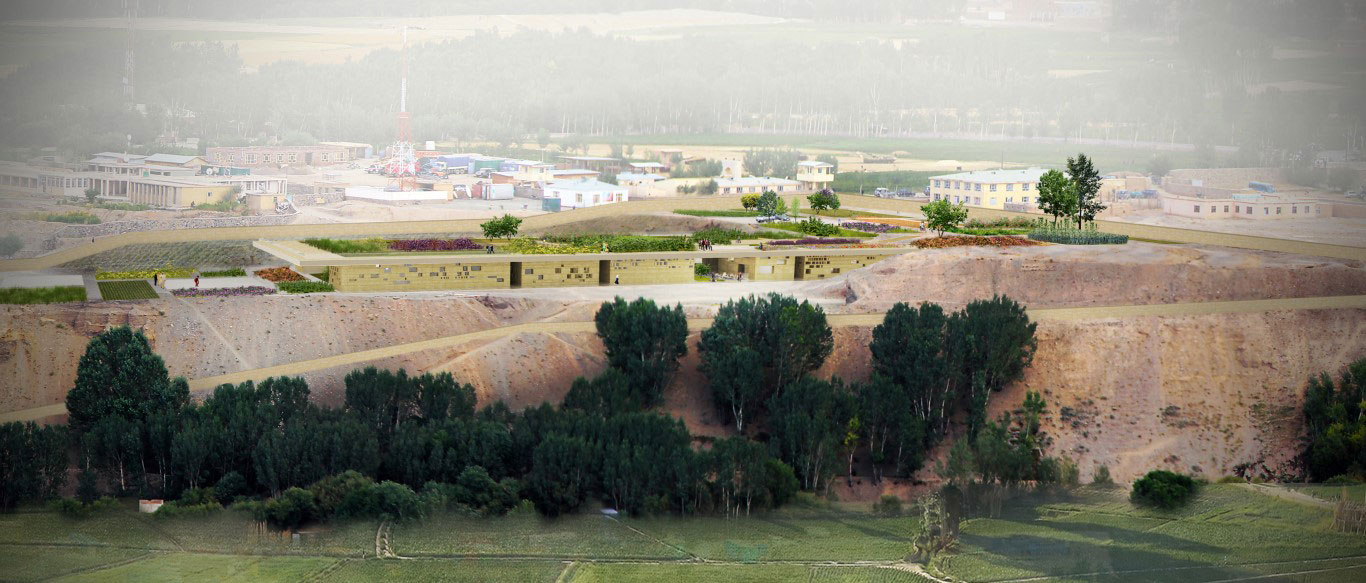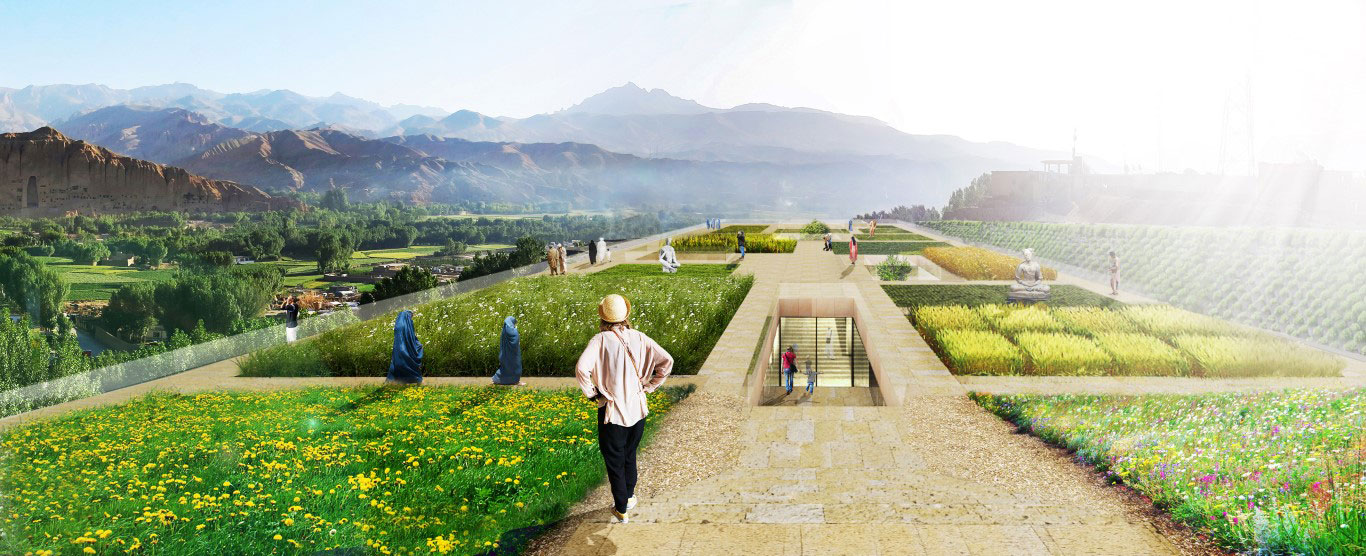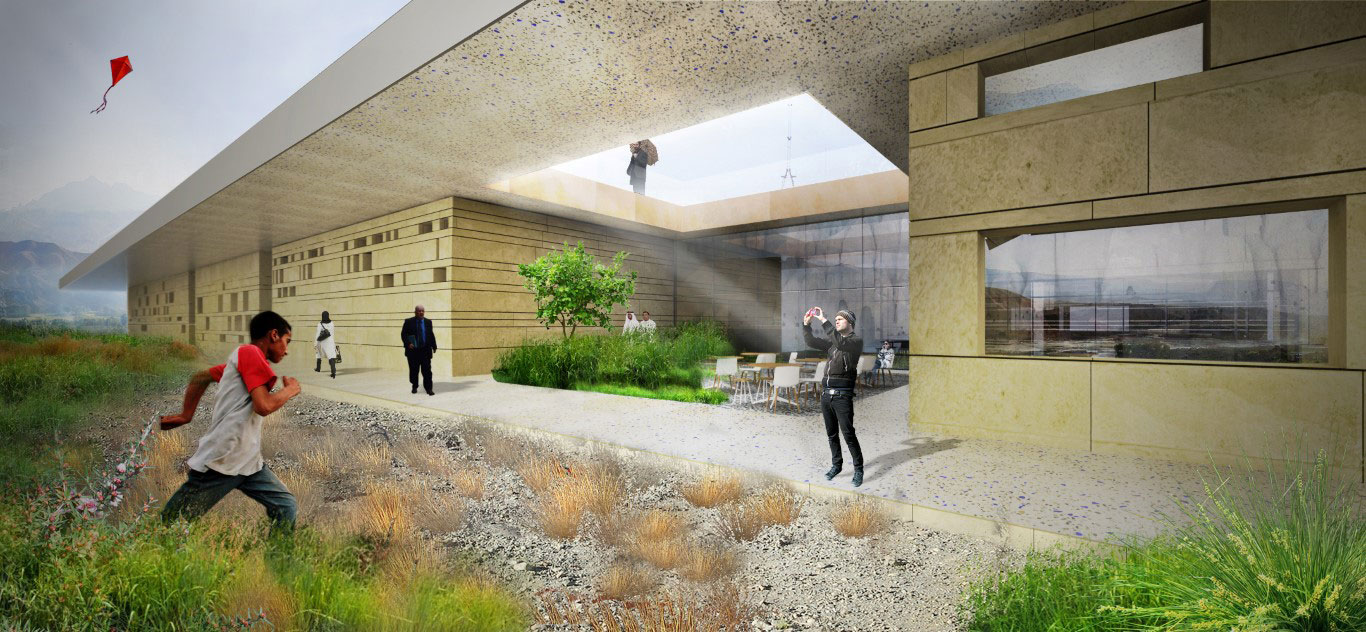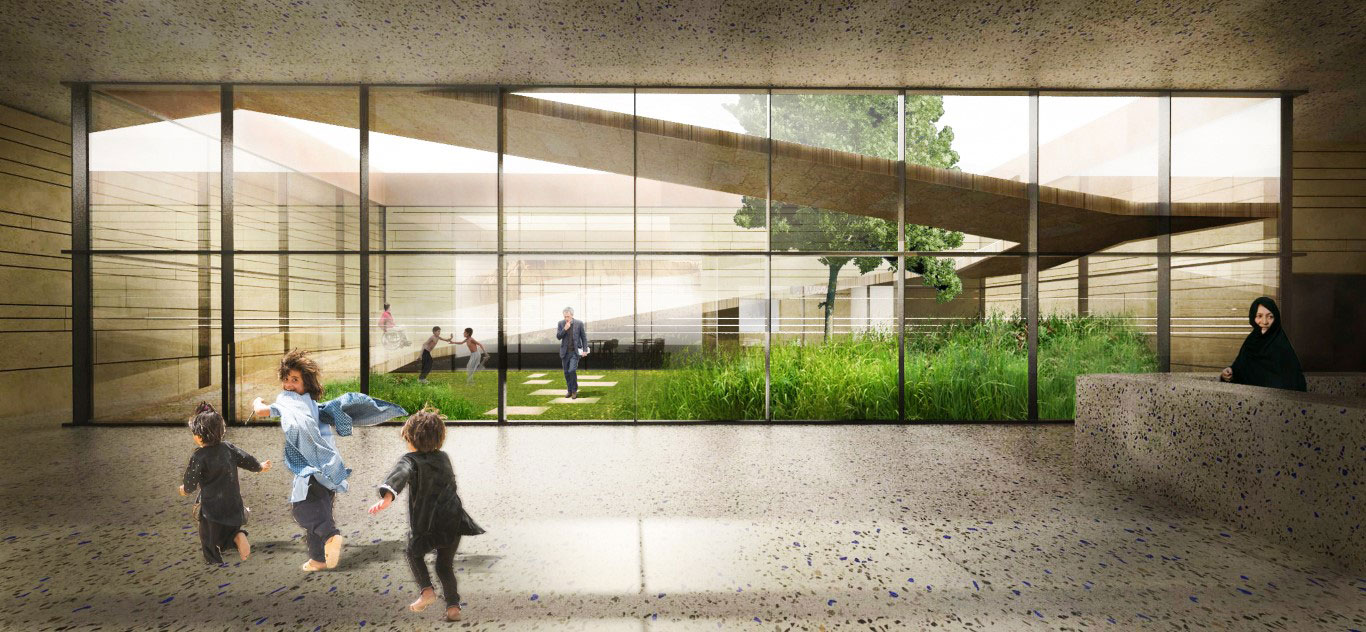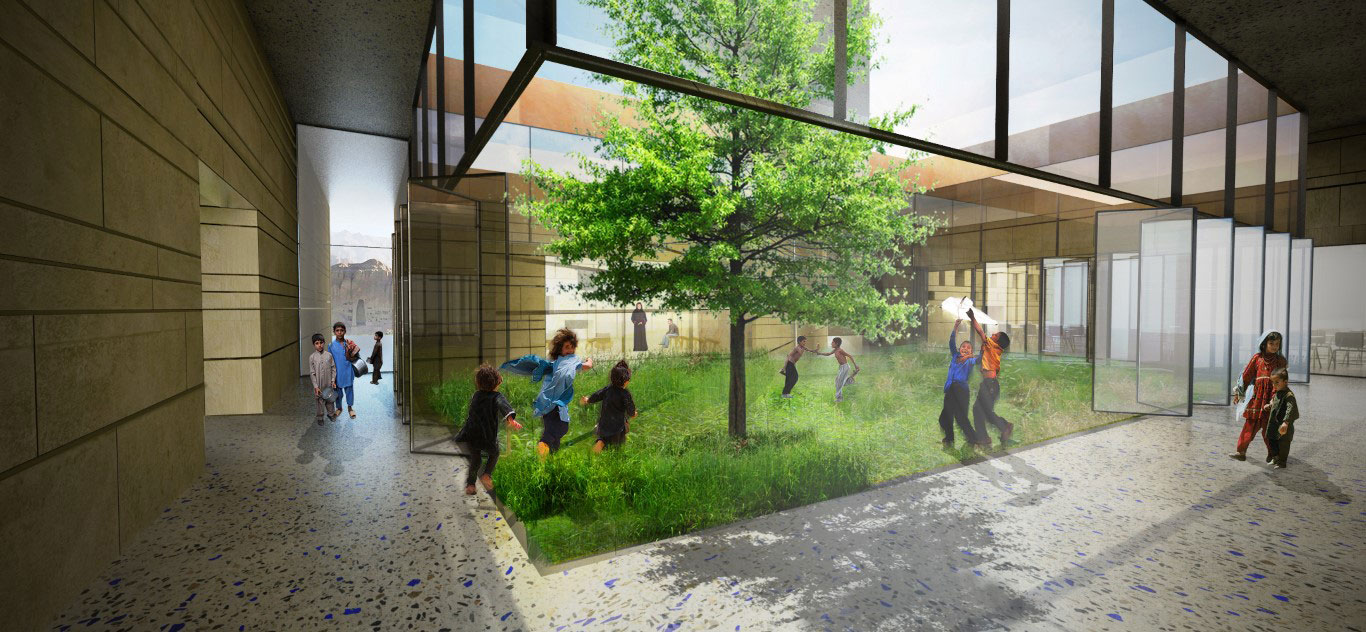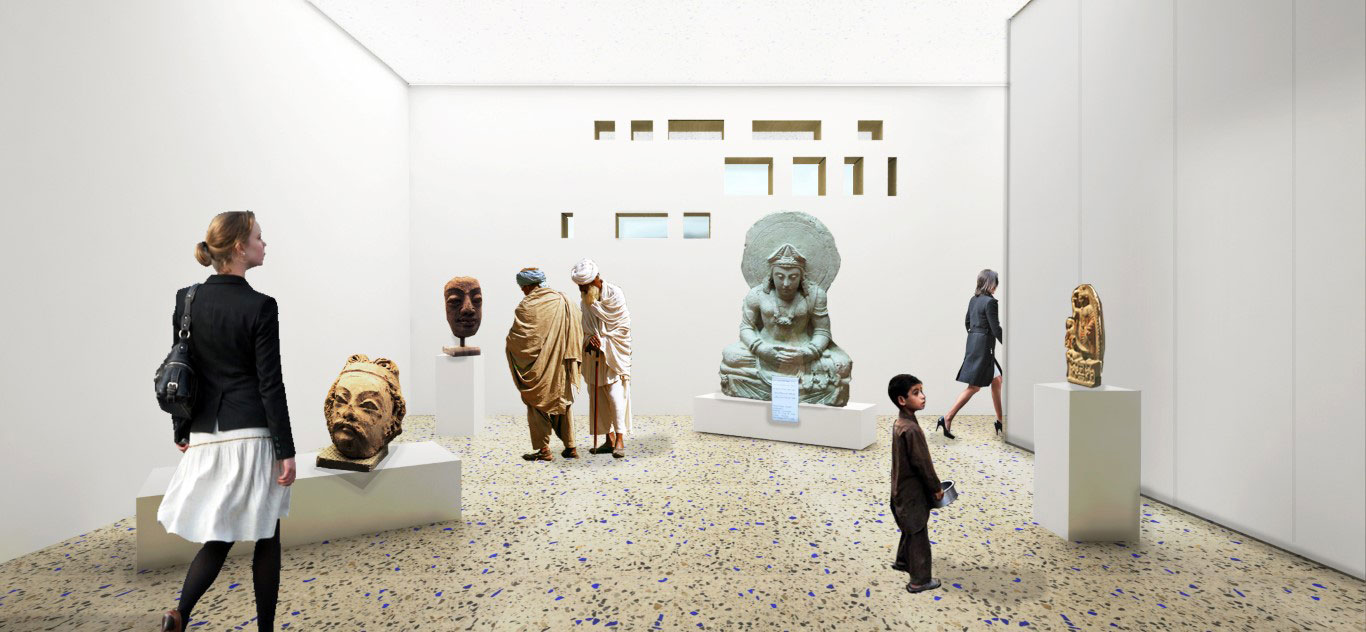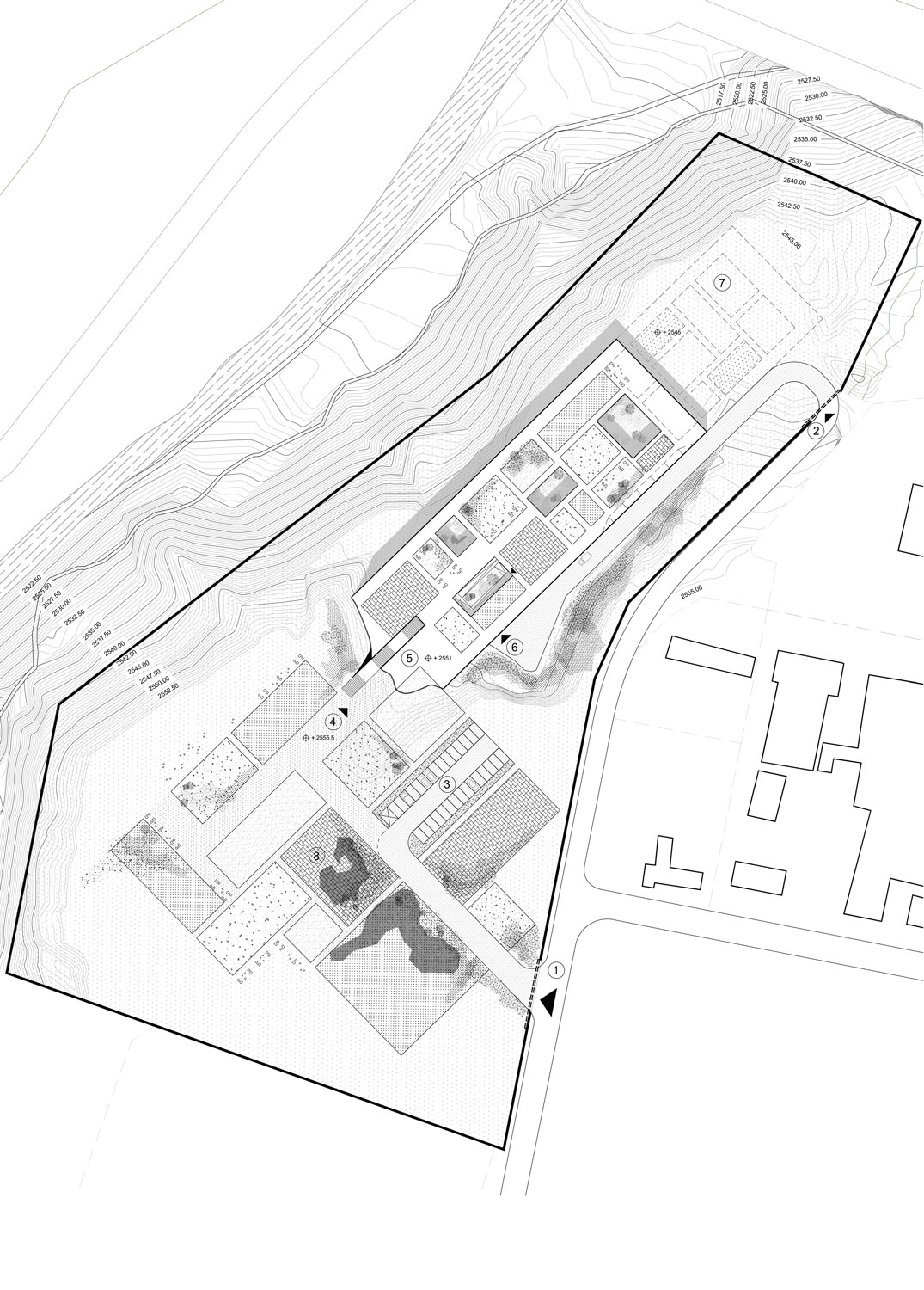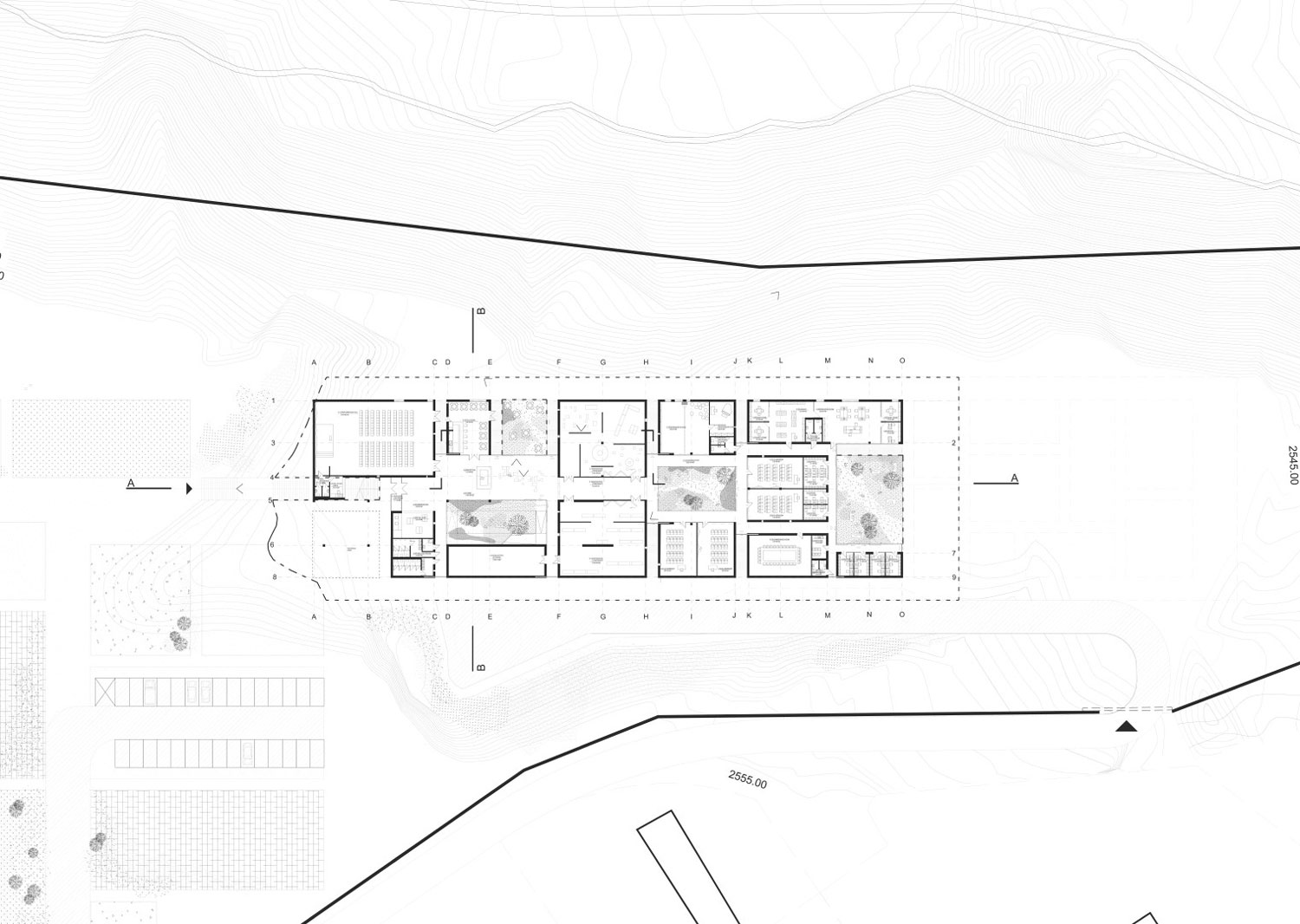1116-KON-BIM.AF-2015
Clients: UNESCO, Ministry of Information and Culture of Afghanistan
Status: Competition (2015)
Location: Bamyan, Afghanistan
Climate: Desert / arid, Hot
Materials: Concrete, Stone
Environment: Desert
Visualizer: Studio
Scale: 2.200 ㎡ Medium
Types: Cultural, Cultural center
Within many years Afghanistan has been a place of a great struggle. Torn between wars, different religion views and other destructive actions, it lost its greatness. Currently beginning its second decade as a democratic country, it is slowly growing back and looking for a new identity that does not forget about its past admirable times.
There is a massive potential hidden in the Bamiyan Valley that could generate this new development. Through the centuries it was a junction between east and west, a place where a different cultures met and influenced each other. Surrounded by the beautiful landscape and magnificent views of the Buddha Cliff, Bamiyan region present a perfect and peaceful scenery that could attract people and become a much needed impulse to grow. That is why the idea of a Cultural Centre located exactly there, is a great opportunity to generate some actions and bring back greatness that Bamiyan once lost.
The main idea is to create a platform for actions, such as education, cultural development, communication and media that could give a possibility for dialog between local people and future visitors. Through the intensive research of local culture and heritage, we decided to bring all good aspects of each local typology, join them together and give them a modern, much needed twist. We based our design idea on reinterpreting traditional Afghan village form, with its complexity and diversity into a new clear typology.
Constructing of the building
The first step and our first gesture was to create a big roof that is a continuation of a landscape. It therefore blurs the boarder between what is natural and created, existing and new. This action creates a unified space underneath, which becomes a new environment. The program area of the building has been converted into simple shapes and put together to look like a traditional hill side terraced housing – which is a link to the basic layout of the building. Program block, although spread apart visually, combines different clusters that could work both together and separately. Movement in between these blocks, creates open spaces for natural flow of people.
This floating space highlights unclear difference between ’inside and outside world’ which is so common in Afghan housing. Introducing green courtyards, big openings in the roof and landscaping, helps achieving this exact same feeling within our building. Straight corridors and open spaces additionally form an easy and clear understanding of the building circulation. Specific collocation of the boxes helps to create an interesting sequence of beautiful exterior views, that crop and focus people on a breathtaking views of the Buddha Cliff.
Functional zoning
Building is split into two main parts – an open one and a semi-closed one. Functions are gradually closing o, making more intimate private surroundings for some of the areas. Zone near the entrance is bright and representative. Close to the reception there is an open courtyard with a special ramp that gives a direct access to the roof terrace. Additional function in this zone is a shop with souvenirs as well as a cozy café with a nice courtyard which is open directly towards the ancient cli.
Hidden on the left side is the big performance hall that carved in the rock just like an ancient cave. In the middle of the building there is an exhibition zone which is a central part of the whole assumption and the heart of the building. Divided into two parts, that can work separately as a fixed and temporary exhibition, or joined together making a big, open and flexible space. Behind it there is an educational and research center. Here blocks are placed much closer to each other what creates more intimate and private atmosphere.
Facades
The research about the facades initiated a dialog between the new design and the Buddha Clion the opposite site of the valley. After analyzing the clistructure it was shown that what gives it unique and picturesque look is the pattern made of the openings in the rock. The organic way of their placement and the strong contrast between their sizes create a beautiful vibrating mosaic of dark spots on the warm beige surface of the cli. Similar rule was simplified and introduced into the project. Each box is perforated according to the amount of light which the function in it needs. It gave the possibility to play with voids and opaqueness and create interesting modern looking elevations.
Materials
Each box is covered with a lime stone cladding organized in horizontal stripes with different width. Some of the stripes consist of openings which size can be regulated according to the needs. Floors are made of terrazzo with a mix of the local stones and a famous Afghanistan stone, called Lapis Lazuli. Outside area and the roof are covered in patches of local grasses and corps, recreating the feeling of the surrounding fields in the Bamiyan Valley.
